Preamble:
Originally posted in English on my English and German audio review site, the "
Kopfhörer-Lounge", here comes my review of the new Westone UM Pro 10.
Introduction:
Actually, Westone does not really need much further introduction – it is one of the major brands and international big players, operating for many years. It is also a company that was and still is very important in the in-ear monitoring business.
Founded in 1959 (!) with the main market being listening protection and in-ear monitoring, Westone also designed and manufactured the E1 plus E5 for Shure and co-developed and manufactured Ultimate Ears’ first products when Jerry Harvey was still with Ultimate Ears.
So as one can see, Westone is definitely a company that is experienced and has got a long tradition on its own, but is also a company that laid the foundation stone of other companies.
In addition, the W4R (that I purchased when it was released and later reviewed here in
German and
English), that used to be their flagship model a few years ago, set quite high standards when it came to technical performance found in universal fit in-ear monitors, and it still does.
Nowadays, the American company is still making listening protection, military earpieces, custom ear moulds, custom moulded in-ear monitors for live musicians, as well as universal fit in-ear monitors for professional and private use.
Moving forward to late 2017, one of Westone’s product lines with Balanced Armature drivers, the UM Pro line, was recently refreshed and updated with proprietary BA drivers. The UM Pro series’ entry-level model, the
UM Pro 10, is a single-BA in-ear with removable cables and is priced in the lower medium price range for single-BA in-ears.
How does it sound and perform? Well, that’s what this very review is about.
Full disclosure: The Westone UM Pro 10 in-ears were sent to me free of charge for this review. As always, my words are nonetheless true, unbiased honest and written without any guidelines or requirements for the review, no matter how it would turn out.
Thank you, Westone and Ryan!
Technical Specifications:
Price: $149/
€149 (
Amazon Germany)
Drivers per Side: 1
Type of Driver: Balanced Armature, proprietary
Sensitivity: 114 dB SPL @ 1 mW
Impedance: 19 Ohms
Frequency Response: 20 Hz – 16 kHz
Warranty: 2 Years
Cable: detachable, MMCX
Delivery Content:
The cardboard box the UM Pro 10 arrives in is nothing too special for a well-designed package that provides you with all the interesting information about the product, package content and company, and is what I pretty much expected to find.
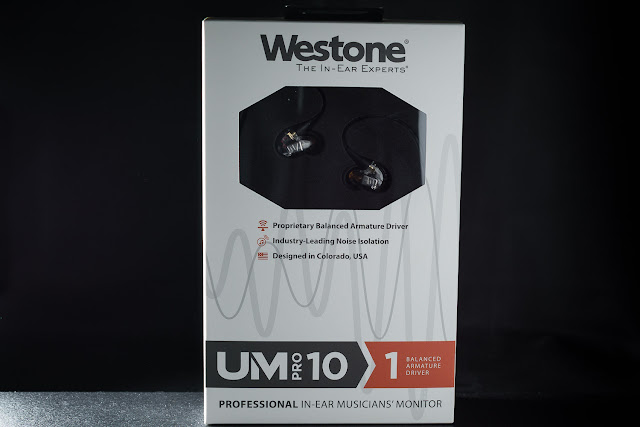
Inside however, even though the UM 10 Pro is “just” Westone’s entry-level single-BA in-ear, the company didn’t cut costs, since you will still find 10 pairs of differently sized Westone Star silicone and foam tips, Westone’s Mini-Monitor Vault 2 carrying case, and last but not least a cleaning tool.
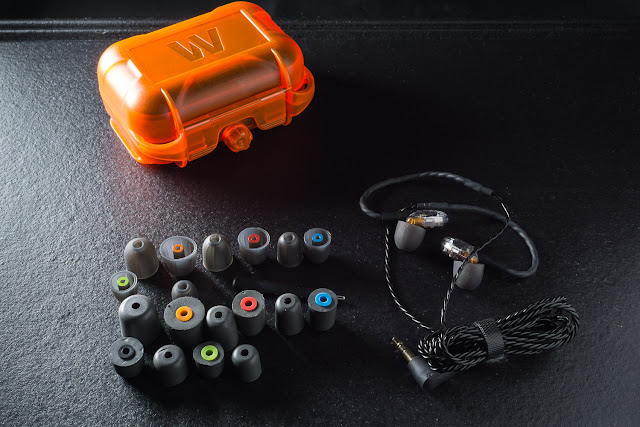 Looks, Feels, Build Quality:
Looks, Feels, Build Quality:
Let’s take a look at the accessories first: Bundled with the UM Pro 10 is the new Mini-Monitor Vault 2 case that is obviously based on the Monitor Vault I know from my
W4R, however it has now got a pressure release valve. It is among the sturdiest and best-protecting cases you can find on the market, and its plastic seems to have improved since the first generation where the clasp could break after one or two years of usage – only time will tell how reliable Mini-Monitor Vault 2’s clasp is though.
Instead of bundling just any cheap cable with their entry-level single-BA model, Westone included the same cable (called “EPIC”) that you would also find included with their other multi-BA models. It is undeniably a professional-grade cable with three twisted conductors below the y-splitter (and two twisted conductors on each side above it), doesn’t lack a chin-slider and is nicely flexible. The ear guides are by the way flexible silicone tubes that automatically adjust to your ears’ radius and don’t contain any memory wire.
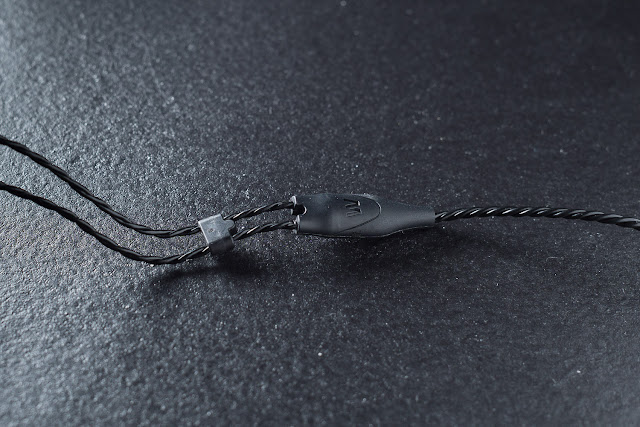
The ear tips, Westone’s Star tips, are longer than the ones the company used to use in the past. While I personally don’t think that they are superior to the old ones when it comes to comfort and seal, they definitely are very soft and flexible. And what is nice is that they are colour-coded by size.
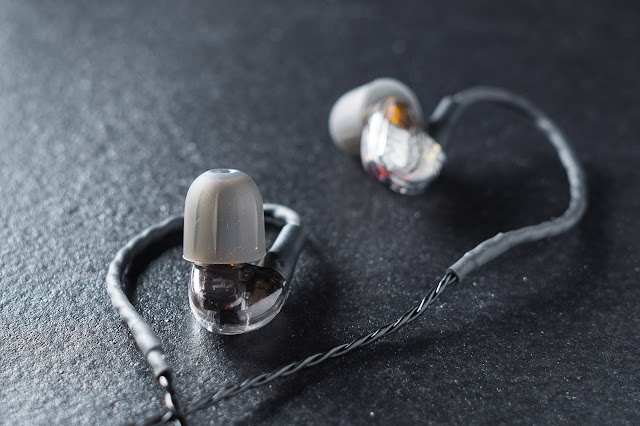
The shells are made of semi-transparent black and transparent clear plastic. They appear quite sturdy and reliable.
Being able to see the driver, wiring, sound tube/guide and acoustic damper thanks to the transparency is something that I personally like, and what makes the in-ear look nice, visually.
Comfort, Isolation:
It is quite surprising how small the UM Pro 10 actually is, despite having removable cables. Chances that the shells will be too large for your ears are therefore very small, and positioning the in-ear in my large ears is super easy.
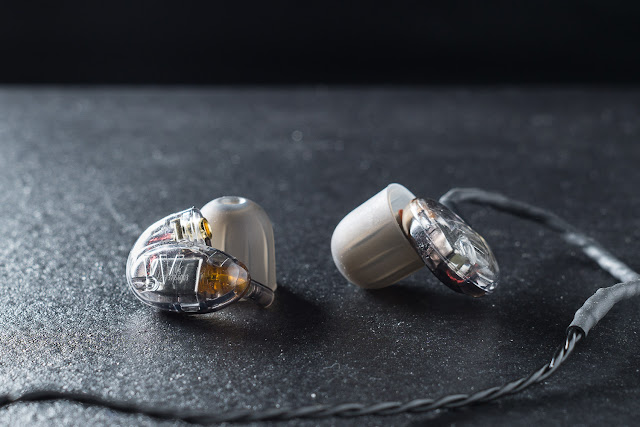
Comfort is generally good and the flexible cable that pleasantly lacks microphonics almost entirely definitely contributes to this, along with the soft ear tips.
Not that much surprising given the closed shells, noise isolation is on a quite high level.
Sound:
My main source for listening was the
iBasso DX200 (
AMP1 module).
I only used the largest included silicone tips (orange coding) for listening.
Tonality:
Being mainly familiar with my
W4R’s sound signature when it comes to Westone’s in-ears, however also knowing some of the company’s other models, the
UM Pro 10 was quite a bit of a surprise for me upon first listening. It doesn’t have the fullness and midbass elevation that is often associated with many of the American audio manufacturer’s in-ear models. Instead, the UM Pro 10 is tuned for a fairly neutral sound reproduction with just a pinch of added bass lift and a bit of middle treble relaxation to it. I would therefore characterise the UM Pro 10 as “pretty neutral, but not in an offensive way”.
Tonally, the in-ear that comes closest to the Westone would probably be the
Ultimate Ears Pro Reference Remastered, however saying that both are tuned similarly would be foolish. While both are quite similar in the bass and lower midrange, the Westone has got the less intimate vocal range, inferior extension in the highs, and a slightly more relaxed lower and middle treble presentation.
When it comes to bass quantity, the UM Pro 10 sits right between the
Etymotic ER-4S/
SR, two in-ears that are tuned for a diffuse-field neutral sound in the lows, and the
Etymotic ER-4XR, an in-ear that would represent a tuning in the lows that many manufacturers would still characterise as a target for neutrality, however with obviously a little more bass quantity than an in-ear tuned strictly for a diffuse-field neutral bass response (that you will find almost never) would have. Ultimately it’s closer to the
ER-4XR when it comes to bass lift, with an elevation that is only ca. 3 dB compared to a truly diffuse-field flat monitor.
Extension to the sub-bass is by the way quite good and the UM Pro 10 shows almost no roll-off towards the true sub-bass.
It is nice to hear that the lower midrange and root are mostly flat, uncoloured and neutral wherefore instruments don’t really have any added fullness to them and deeper voices aren’t thickened. Since the central midrange and low presence range aren’t lifted but flat (well, that’s actually not 100% accurate since the lower presence range starts to roll off in favour of an even, harmonious recession in the lower and middle highs), vocals and the mids in general aren’t too close in the mix but have a slight distance (not to be mistaken by being “recessed”) wherefore the UM Pro 10 is not an in-ear that sounds fatiguing or too intimate over time.
The midrange timbre is overall really good and mostly uncoloured, with just a touch of darkness with higher female voices.
The treble above 1.5 kHz is slowly receding, with an even dip up to around 7 kHz where the highs start climbing again, with almost neutral level at 9 kHz again. This however won’t mean that the UM Pro 10 is a really dark sounding in-ear per se – it simply isn’t. It just has enough of a recession in the lower and middle highs to sound rather a bit relaxed here, which (in the middle highs around 5 kHz) is something not too uncommonly found in Westone’s in-ears in order to maintain a presentation that is not too fatiguing or offensive.
What the in-ear however does lack is some extension and subtle air and sparkle in the super treble past 10 kHz, since it starts to roll off above 9 kHz.
- - -
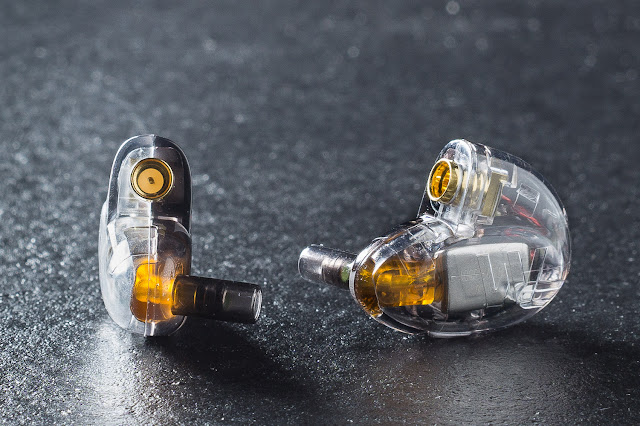
Simply put, the UM Pro 10 is tuned incredibly well and sounds relatively neutral in an inoffensive and smooth way, however it ultimately lacks some extension and sparkle in the super treble.
Naturalness, timbre and tonal realism are where it performs really well.
Resolution:
The UM Pro 10 won’t fully have the technical precision and headroom as some of the better multi-driver in-ears, but it is detailed, quick and precise for a single-BA model, that’s for sure.
As you would expect, Westone’s single-BA offering from the UM Pro line has got good speech intelligibility and midrange details. Good to hear is that this level of details can be kept upright in the highs and lows as well – the UM Pro 10 doesn’t lack definition in the highs and lows in relation to the mids and separates single notes well and without being hazy.
The key feature when it comes to resolution when you want to buy a single-BA in-ear, coherency, is what the in-ear has as well. This is generally something where most good single-BA in-ears somewhat outperform some (but definitely not all) multi-BA models.
Bass, as you would expect, is fairly tight, fast and has got good control and definition (even in the sub-bass).
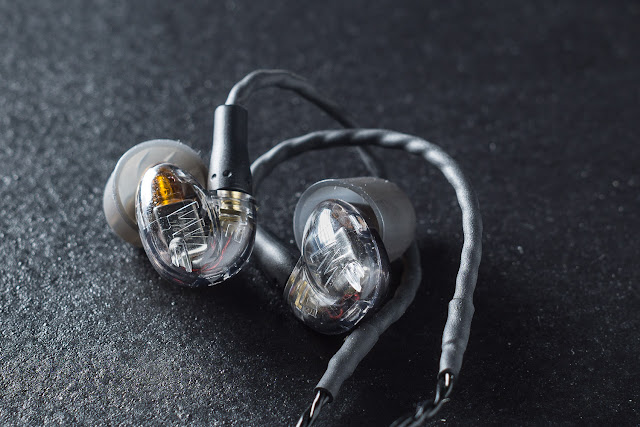
The
EARNiNE EN120 has got a slight edge over the Westone in terms of overall detail retrieval, however the EARNiNE has also got one treble resonance that can get a bit unpleasant at times, and the
UM Pro 10 manages to still have good sub-bass definition whereas the
EN120 struggles a little in that area.
Soundstage:
One will neither get a huge nor a small soundstage with the UM Pro 10. Who still expects single-BA in-ears to sound congested, which is definitely not the case for a good number of models, will probably be somewhat surprised that the Westone has got a soundstage that I would say is somewhat larger than average, with a good extension to the sides that exceeds the basis of most single-BA in-ears, while it is not exactly as wide as the
W4R’s stage.
The
UM Pro 10 has also got some spatial depth, but compared to the width it is not as pronounced. Height is quite good.
The positioning of instruments is precise and the separation is good, too, while there is not as much air around single instruments as with higher-end multi-driver in-ears. Generally speaking, spatial precision is nonetheless good for a single-BA in-ear and of course the Westone also features really good coherency in this regard, just as you would want and expect to find in a good single-BA implementation.
---------
In Comparison with other In-Ears:
Brainwavz B150 (single-BA):
When the B150 entered the market, it kind of crushed some of its competition, offering well-tuned and technically capable single-BA sound for little money.
An advantage the UM Pro 10 has over the lower-priced B150 is definitely its more premium, more flexible cable that is also removable (MMCX plugs), a feature that most companies usually charge about $50 extra. Then it also comes with the sturdier case and larger selection of ear tips, making it a more premium package overall and placing it in the lower medium price range for single-BA in-ears.
Although Brainwavz has managed to give their B series a unique and individual design despite being based on a shape that many in-ears are based on, the Westone’s transparent shells with the visible BA driver and orange element look a little more special and unique. It’s a matter of preference though.
Despite the Westone having removable cables, both in-ears are comparably small.
The B150 has got the more pronounced bass kick and fuller, warmer lower midrange in comparison. Extension into the sub-bass is flatter on the UM Pro 10 since the Brainwavz has got more of a midbass lift in the lows.
Voices on the B150 are somewhat warmer and have more body.
The Brainwavz sounds a bit darker in the highs, however at the same time it extends a bit further in the treble, featuring a little of that subtle air and sparkle above 10 kHz.
Both in-ears are rather close when it comes to technical abilities, but I still see a slight advantage for the Westone overall, but its different, more neutral tuning is what mainly contributes to two of the three differences.
The UM Pro 10 has got the slightly tighter bass while speed, control and texture appear to be similar.
Overall I would say that the resolution is quite similar between the two in-ears in the midrange, with the B150 just sounding slightly more masked in the lower mids due to its comparatively fuller/warmer lower midrange and root.
The Westone has got the slightly sharper note separation in the highs.
Soundstage appears rather comparable, with the Westone featuring somewhat more width and a bit more height, while the B150 has got a bit more spatial depth. Both in-ears place and separate instruments similarly precise.
Shure SE215m+SPE (single dynamic driver):
The Shure SE215 is a well-known dynamic driver classic with a bassy, warm and inoffensive sound. It has definitely got its fans, and I cannot deny that I also really like it in its price range for its tuning (despite mainly using quite neutral sounding in-ears most of the time), isolation and ergonomics, even though nowadays there are better performing BA models for the same price or even less.
Both in-ears have got a comparable shape and removable cables, nonetheless I cannot continue without mentioning that the Shure’s new microphone & remote cable is unfortunately a step back compared to their other models’ cables, and that the Westone clearly features the more flexible, more premium cable with the better implementation of strain-relief and an angled connector that appears and feels much sturdier.
Even though I like the Shure’s white shells, I have to admit that the Westone’s transparent shells with the orange elements and visible BA driver look slightly cooler.
A bit surprisingly, the Westone has got shells that are quite a bit smaller than the Shure’s.
The Shure is tuned considerably bassier and warmer, with the fuller presentation in comparison. Vocals on the SE215 are more intimate.
The Shure sounds a bit darker in the upper highs (cymbals) but extends a bit further.
While the Shure has got a quite tight and quick bass for dynamic driver standards and is among the better models in this regard, the single-BA driver used in the Westone is nonetheless a bit superior when it comes to tightness, and also slightly when it comes to speed. Therefore the Shure has got more of the typically recognisable dynamic driver slam and texture, while being ultimately not as controlled or detailed in the bass as the Westone when more complex and faster tracks are being played.
Overall the UM Pro 10 sounds a bit cleaner than the Shure, but not by much, however it definitely remains better controlled with more complex material. It’s overall just the slightly more refined appearing in-ear when it comes to technical presentation.
The Shure’s soundstage is overall somewhat wider and sounds a bit more open.
Conclusion:
Westone’s entry-level single-BA model of the UM Pro line, the
UM Pro 10, is a nice in-ear with quality accessories and build quality, Westone’s removable EPIC cable, as well as a coherent, fairly neutral but not aggressive or exhausting sound.
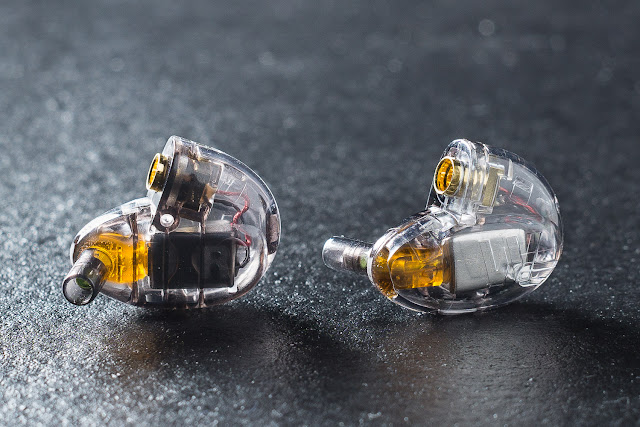
What places the
UM Pro 10 above most of its sub $100 single-BA competition are things like the high quality removable cable, excellent selection of 5 pairs of silicone tips and 5 pairs of foam tips, very sturdy carrying case and good end-to-end extension as well as end-to-end precision for a single wideband-driver Balanced Armature in-ear monitor. And it is tuned really well.
The only thing where the in-ear could be better is extension past 10 kHz.



